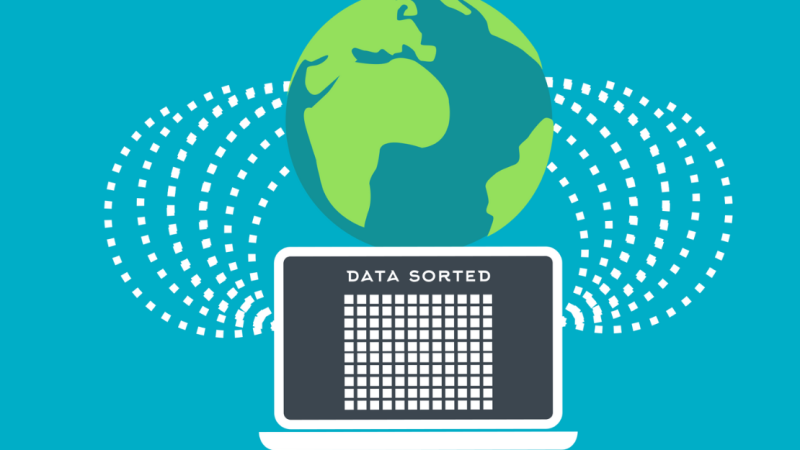How To Analyze Time-Sensitive Data And Work With The Information

Categories :
In the modern world, data can be an invaluable asset for businesses and organizations. It can provide valuable insights into customer behaviors and trends—allowing companies to make informed decisions about their strategies.
However, collecting and analyzing data is only the first step in a larger process that requires careful thought and planning. Knowing how to analyze time-sensitive data quickly and accurately is essential for any organization that wants to stay competitive in today’s fast-paced market.
Therefore, let's explore seven ways to effectively work with time-sensitive data so you can make better decisions faster than ever before. By following these steps you should be able to get the most out of your analysis efforts while remaining agile enough to adjust when needed.
Identify the most important data points first
When looking at a large dataset, it can be overwhelming to try and analyze all of the variables. By focusing on the most important data points first – such as customer demographics or purchase trends – you can narrow down your efforts and get to the heart of what’s driving your decisions. This will allow you to better identify patterns and draw meaningful conclusions quickly.
Additionally, time series data analysis is also important in this process. According to BowTiedRaptor guides, you need to make sure that the model of analysis is using only the data points that are related to each other, to a certain time point, and to the trends that have been identified. Ultimately, by looking at how different variables interact over time you can gain a more complete understanding of what’s happening in the market.
Determine the timeline and frequency of analysis
No matter how much data you’re collecting, it won’t do you any good if it isn’t being analyzed regularly. Depending on the size of the dataset, this frequency can vary from weekly to hourly. You should also set up a timeline for when you need to report and act upon your findings as this will help ensure that all stakeholders stay informed and focused on the task at hand.
On the other hand, you may also want to be mindful of the amount of time it takes to analyze each dataset. If your analysis process is taking too long, you could miss out on valuable insights that might’ve been gained in a shorter timeframe. Consider using data visualization tools or automated processes to expedite the process and stay agile.
Implement automation where possible
Manually analyzing large datasets is time-consuming and can lead to decreased accuracy over time. Fortunately, there are a variety of software solutions that can automate certain aspects of data analysis, such as sorting data sets into categories or identifying correlations between variables.
Automation can be especially helpful in quickly analyzing large datasets and streamlining the process—this will free up resources, so you can focus on more important tasks such as forming conclusions or taking action based on your findings.
Additionally, automation can also be used to enrich the data you are analyzing. For example, natural language processing (NLP) algorithms can be used to extract key insights from unstructured data sources such as customer reviews or social media posts.
You can also read more on data driven innovation to explore how machine learning and AI transform data analysis processes across industries. Embracing these technologies can significantly enhance the accuracy, speed, and scalability of your data analysis efforts, making it easier to derive actionable insights from even the most complex datasets.
Evaluate data accuracy and completeness
Data accuracy is essential for any analysis effort—but it's especially important when dealing with time-sensitive information. To ensure that you are working with quality data, you should check for any inconsistencies or errors in the dataset. This can be done by comparing the results of your analysis to industry standards or by using automated tools to detect and correct any inaccuracies.
Additionally, make sure that the data is complete—if there are missing elements it could lead to false conclusions or a lack of accuracy in your analysis.
Data can be biased in a variety of ways—from the data sources used to collect it to the algorithms that process it, bias can affect every stage of your work. When analyzing time-sensitive information, it’s important to consider all potential sources of bias and take steps to ensure that they don’t affect your results.
For example, you should strive to use unbiased data sources when collecting information and consider using AI-driven algorithms that are less open to manipulation than traditional programming languages.
Include stakeholders in analysis and decision-making
Finally, time-sensitive data requires quick decisions that can have immediate impacts on the business and to make sure that the right decisions are being made, it’s important to involve the appropriate stakeholders in your analysis process. This could include upper management, product or marketing teams, or any other group with a vested interest in the outcome.
By doing this, you can ensure that everyone is on the same page about the findings and implications of your analysis, as well as any action that needs to be taken. This will help to streamline the decision-making process, reduce miscommunication, and allow teams to make data-driven decisions quickly and effectively.








